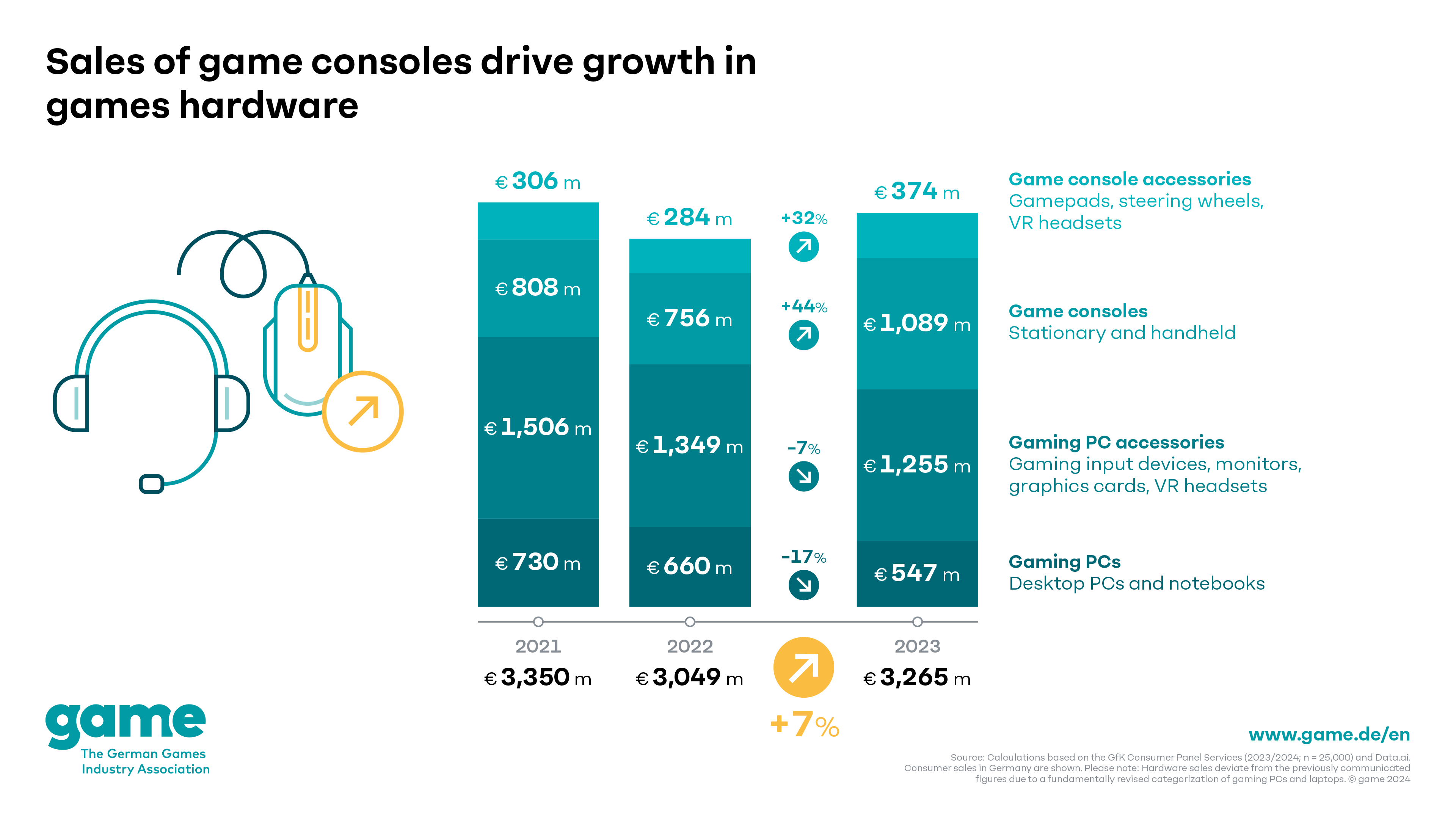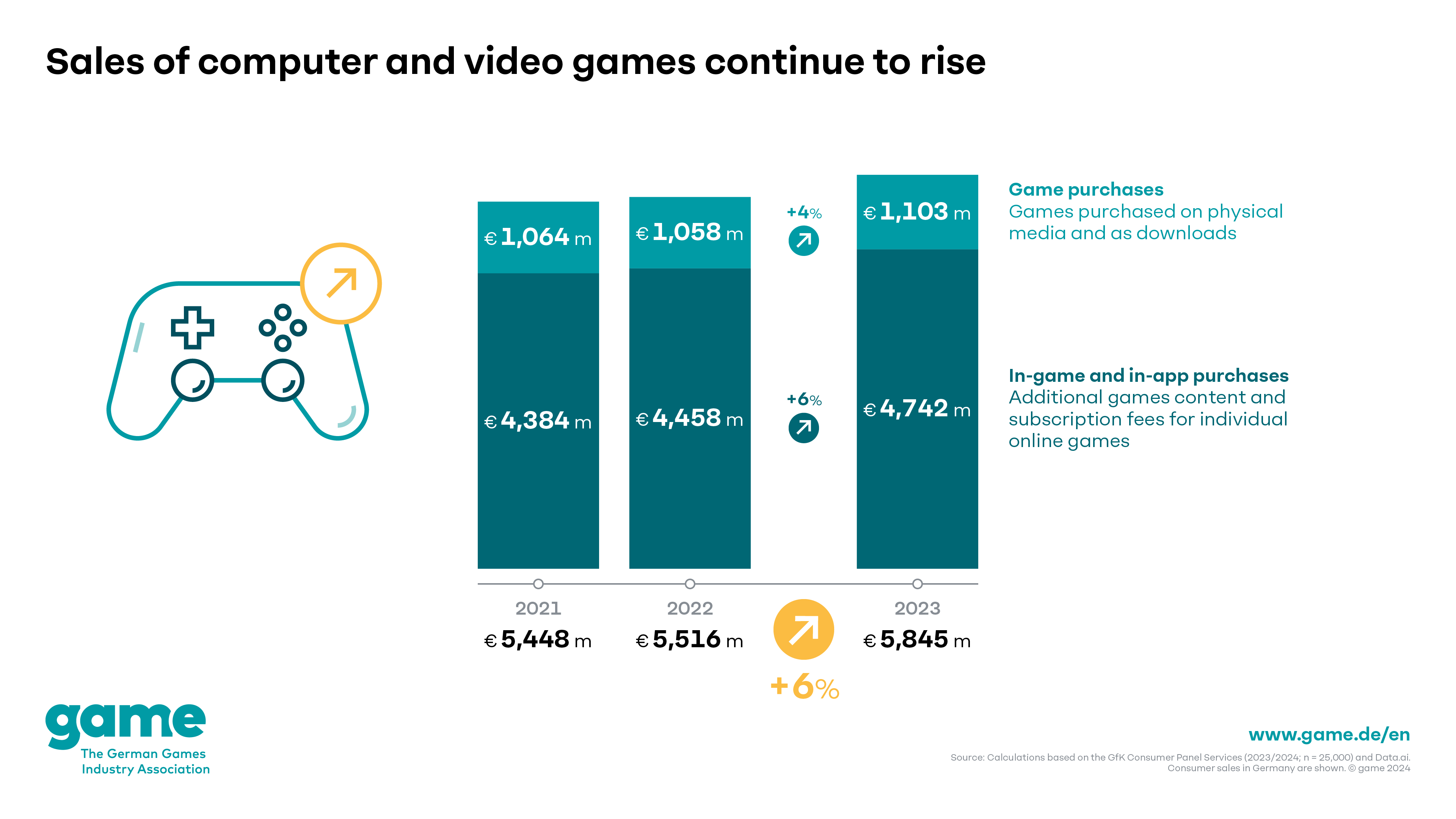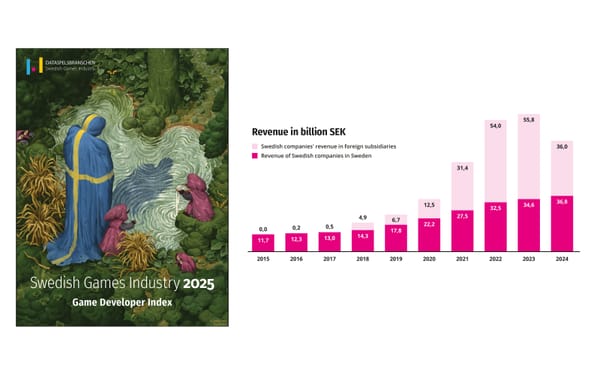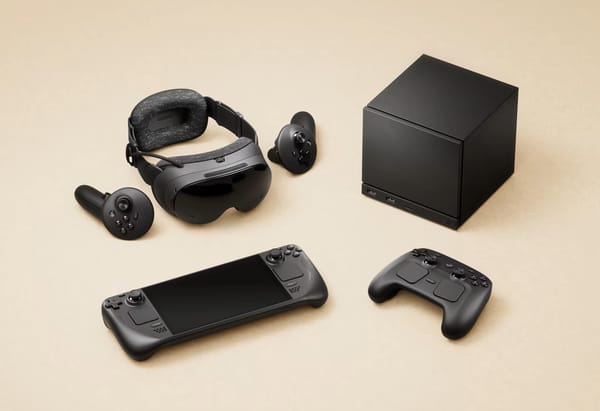German Games Market Grows and Remains Below €10b Mark




In 2023, Germans have spend 9.97 billion euros on games, gaming hardware and fees for online gaming services. This is the result of new market data presented by the industry association game. The market thus grew by around six per cent, although the sub-markets developed very differently.
The biggest growth in the German games market last year was in console hardware and console accessories. At the same time, sales of gaming PCs fell sharply. This segment is also responsible for the fact that the German games market will again fall short of the ten billion euro sales mark in 2023. This is because GfK has changed the definition of gaming PCs and thus also adjusted the market volumes of recent years. As a result, the German games market will reach a total value of EUR 9.97 billion in 2023, with an increase in sales of six per cent.
In fact, the association had already reported sales of just under ten billion euros for 2022. However, GfK's changes to gaming PCs reduced the figure to 9.43 billion euros. Irrespective of this retrospective change, the German gaming market in general developed positively. The hardware sector grew by seven per cent and the software sector by six per cent. Only the sub-market of online gaming services, which includes spending on PlayStation Plus, Xbox Live and similar services, declined by one per cent or just under seven million euros.
"The German games market continues to grow, but a close look at the data shows just how challenging these times are for game companies," says Felix Falk, Managing Director of game. "This is particularly true for small to medium-sized companies in Germany, most of which have only thin capital cover and therefore feel the impact of the tougher investment climate especially quickly. In such turbulent times reliable and internationally competitive political solutions are needed more than ever."

It is interesting to note the very different trends in the various sub-markets. This is particularly true of the hardware data, although there are very individual reasons for this. The decline in gaming PCs can be explained by the boom during the coronavirus pandemic, when many people bought new PCs. These have not yet had to be replaced, so demand has collapsed. The fact that console sales rose by 44 per cent at the same time is due to the end of delivery problems, particularly for the PS5. Consumers made up for purchases that had long been cancelled.
In the software segment, the trend towards in-game and in-app sales continues. Not only do they account for around 80 per cent of game sales, but at six per cent they are also growing faster than traditional game sales, which increased by four per cent. game has not yet provided an analysis of the proportion of physical sales. More detailed analysis will be presented in the coming weeks.









